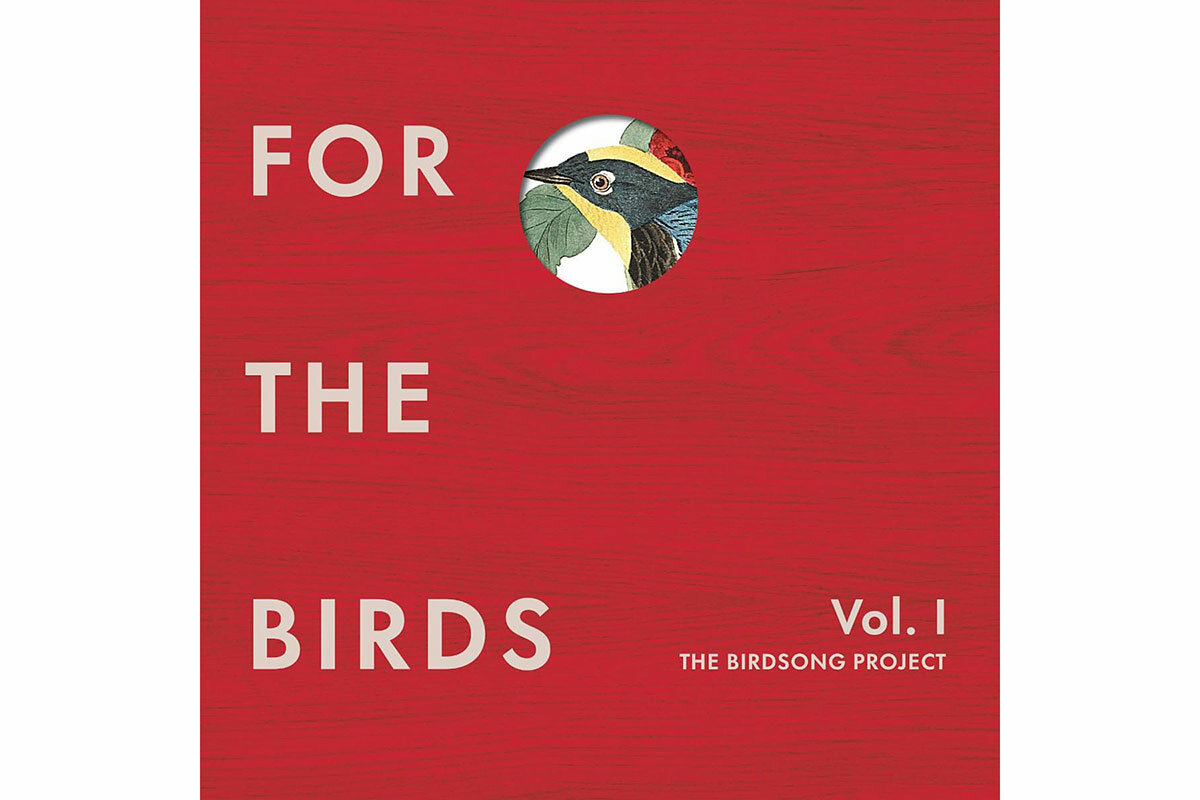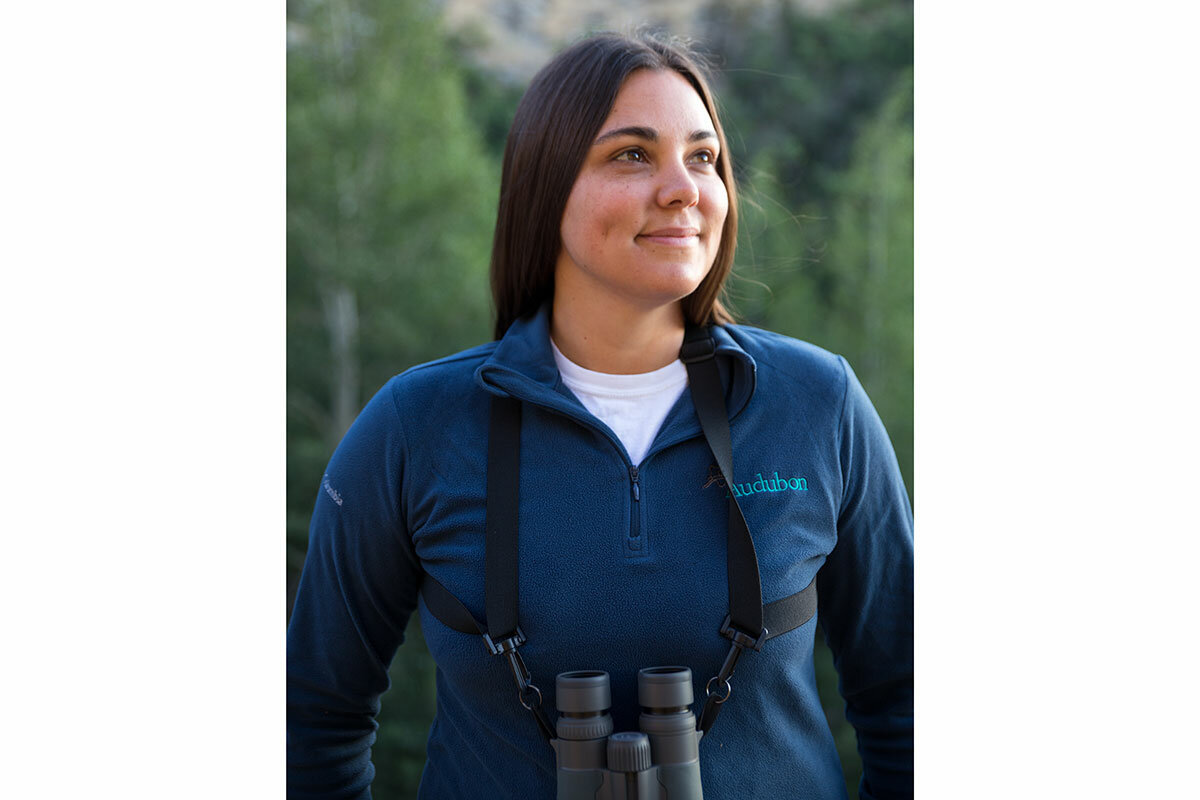‘For the Birds’: Music project celebrates birdsong to save it
Loading...
Randall Poster spends many hours each day listening to music. It’s his job. Some of Hollywood’s most prestigious directors – Martin Scorsese, Wes Anderson, Nancy Meyers – hire him to pick out the perfect songs to pair with scenes in their movies, so the music supervisor is on a continual quest to find remarkable melodies.
Then in 2020, Mr. Poster discovered something extraordinary. The New York resident cottoned on to something he’d heard innumerable times but had paid scarce attention to. Its emotional resonance floored the man with the golden ears.
It was the sound of birds.
Why We Wrote This
The beauty around us can be an inspiration, if we pay attention to it. A new music project hopes to bring that kind of attention to birds and birdsong – and the preservation of both.
“During this dark moment of the pandemic, when we didn’t know what was ahead of us, … you look out the window and nature was still going,” says Mr. Poster in a Zoom call. “I took a lot of solace in the fact that the birds were vocalizing and basically sort of saying, ‘We’re here. We’re still singing.’”
As Mr. Poster’s newfound interest in avian life developed, he became more aware of how climate change threatens birds. A colleague, Rebecca Reagan, conceived an idea: Mr. Poster could invite notable musicians to create music built around birdsong. The result, produced in collaboration with the National Audubon Society, is “For the Birds: The Birdsong Project.”
The big idea behind the project? Take the listener out of their noisy everyday humdrum so that they become more aware of their natural environment. The more we appreciate it, the more we will endeavor to preserve it.
“The world is far more than people,” says Jonathan Meiburg, leader of the band Shearwater and author of the book “A Most Remarkable Creature: The Hidden Life and Epic Journey of the World’s Smartest Birds of Prey.” “It’s very difficult to become attuned to the world of birds and not then start becoming attuned to … thinking about other life on this planet.”
An aural ecosystem
“For the Birds” is a staggering 13 hours of music and features musicians such as Nick Cave and Warren Ellis, Elvis Costello, Beck, Beach House, The Flaming Lips, Cassandra Jenkins, and Wilco’s Jeff Tweedy. A 20 LP box set will be available in the fall. In the interim, the tracks are being released in batches to streaming platforms.
Mr. Meiburg’s band contributed an instrumental featuring an evening chorus that he’d recorded on a high sandbank overlooking the curve of a river in the jungles of Guyana. Mr. Meiburg also wrote an essay for the box set, which he likens to an ecosystem. Indeed, interspersed between the music are poems and short stories read by actors Robert Pattinson, Greta Gerwig, Regina King, Maggie Smith, and others. The spoken word pieces enhance the meditative feel of the set, says Mr. Poster.
The band Calexico, which consists of Joey Burns and John Convertino, also wrote a new song for the project. They’ve previously recorded several bird-inspired songs. In the spring of 2021, the duo were staying at a friend’s beach house on the Willapa National Wildlife Refuge in Washington state – “the right place at the right time to capture music for this project,” says Mr. Burns via email. He spotted a couple of hitchhikers in the rain walking near a great blue heron that was “strutting along the shoreline.” The image inspired him to write lyrics to accompany a swampy, distorted guitar motif.
“I love how Randall gets people involved with his projects, and ‘For The Birds’ is one of my favorites that we’ve been asked to be a part of,” says Mr. Burns. “My family is always tuned in to wildlife and ways of preserving nature.”
“Nurturing … concerned people”
Brooke Bateman, director of climate science at the National Audubon Society, says that bird sounds often connect us to memories of place. For Dr. Bateman, the mournful call of the common loon transports her back to her grandparents’ cabin in northern Wisconsin. A 2019 Audubon report, “Survival by Degrees: 389 Bird Species on the Brink,” included the loon among the birds at risk from range loss and potential extinction due to climate change. The biologist hopes that “For the Birds: The Birdsong Project” inspires people to go outside, even if only to their backyard, and listen.
“It’s time to be inspired in a way that we take action because birds are telling us it’s time to take action,” says Dr. Bateman. “You see ‘389 birds,’ it’s a number, it’s a statistic. But if you unravel what each of those species are, a lot of us are connected to those birds and the places that they connect us with.”
The kinship between mankind and fowls of the air has long been expressed through music. For example, Ludwig van Beethoven’s 6th Symphony simulates a cuckoo with a clarinet, a nightingale with a flute, and a quail with an oboe. The Beatles included chirps of a black-billed magpie in “Blackbird.” In her 2005 song “Aerial Tal,” Kate Bush mimics bird language in a duet with blackbirds. The universality of bird sounds explains why “For the Birds” encompasses such a wide range of musical styles, from minimalist composer Terry Riley, to jazz saxophonist Kamasi Washington, to hip-hop artist Wale, to Japanese singer Hatis Noit.
Mr. Poster conjectures that humankind’s first music may have been an imitation of birds.
“I certainly did not invent the notion of incorporating birdsong into man-made music,” says Mr. Poster, who is also quick to credit the success of “For the Birds” to the efforts of Ms. Reagan and fellow executive producers Elliot Bergman, Stewart Lerman, and Lee Ranaldo. “But in this moment, it felt like it was something that was a timely tribute. And people, I think, are trying to live a little bit more consciously than they did maybe prior to the pandemic.”
The final component of “For the Birds” is a partnership with eyeglass retailer Warby Parker. Mr. Poster asked the company to create a line of inexpensive binoculars to distribute to underserved children in public schools. He hopes to inspire kids to become birders. And adults, too.
“It’s nurturing another generation or two of concerned people,” says Mr. Poster. “Ultimately I think that’s going to be the legacy of the project.”








